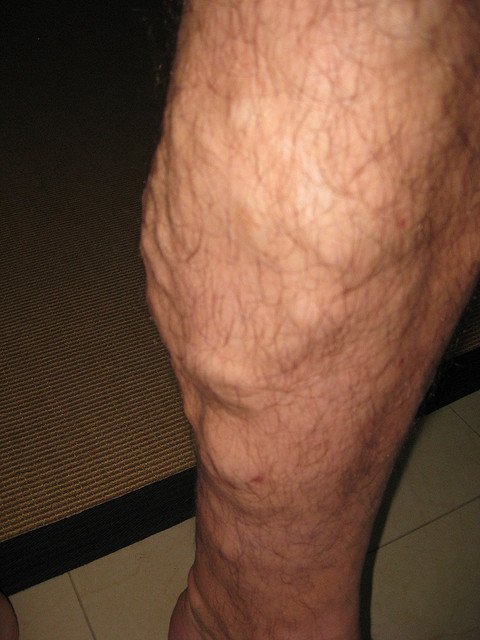Health
How Effective Is Sclerotherapy At Varicose Vein Removal

Over many years Sclerotherapy has been considered the most effective choice of treatment for both telangiectasia and varicosities up until a few years ago. Most doctors thought that Sclerotherapy was ineffective when it came to treating varicosities which were associated with haemodynamically significant reflex, and so it can only be used to remove residual varicosities post surgery or for people who are not fit or want surgery.
There has been constant and sustained improvement in ultrasonography which has improved the efficacy and safety of regular sclerotherapy which allows for a much more detailed evaluation of the results with the advantages of using regular sclerosant as foam. There are a number of distinct advantages of using foam over regular sclerosant. Just recently studies have reported a very high immediate success rate, an acceptable complication rate and low cost associated with foam Sclerotherapy.
That said, the advantages of using foam has been reported as far back as in 1939.

What is the foam comprised of?
The foam used for varicose vein removal is mainly comprised of liquid sclerosant and carbon dioxide. The durability of the foam is mainly related to the size of the bubble, the conditions under which the foam has been prepared and the tension property. The smaller the size of a bubble the overall lighter will be the concentration of the foam, the lower its dilution with the body’s blood and so great sclerosant activity.
The objective of the foam is to push the blood into the collaterals and to ensure a uniform contact with the endothelium. The strength of the foam can often be enhanced by injecting venospasm. The advantages of this technique as compared to others include echo-visibility, adhesiveness, better sclerosing power and lower drug doses.
The popularity of foam sclerotherapy
Various recent improvements in foam Sclerotherapy has made it one of the primary methods of treating varicose veins. The major reason for its popularity today is its low cost, outpatient procedure, easy repeatability, minimal pain after the procedures and that is anesthetic free. However, many experts are still debating as to the best sclerosant, the most effective technique and correct indications. The big factor here is long term data which is still lacking. That said this happens to have worked for millions of people around the world.
Some side effects of Sclerotherapy
There are a few potential side effects of this treatment which include:
- Lower back pain
- Headaches
- Blood clots in various other veins
- A significant change in skin color for instance you’ll notice brown patches in place of the treated veins
- Temporary vision issues
- Fainting
You should be able to return to work and be able to walk immediately once your therapy is complete. However, you will still need to wear compression stockings or thick bandages for around two weeks.
Alternative methods of treating varicose veins
There are a number of other alternative methods of treating this condition which includes laser therapy and wearing compression stockings. Those who have just noticed the condition appear on their foot need to start by wearing a special pair of stockings which are intended to restrict the blood blow to these veins which in effect helps to kill them off. However, these therapeutic stockings should only be worn once your doctor has prescribed them. They also need to be of the right size just so that it fits your foot exactly as it should.
Vein removal Surgery
If your doctor thinks that sclerotherapy and endothermal ablation is not right for you then chances are he will prescribe a surgical procedure referred medically to as phlebectomy. This type of surgery is usually carried out using a general anesthetic, which means that you’ll probably be unconscious throughout the procedure. However, you should be able to return home that same day.
There may be instances where the doctor may recommend that you stay overnight at the hospital which may be required if both legs were surgically operated on. There may also be some post surgical pain that you’ll need to deal with. The pain can vary depending on the veins that were removed.
Getting your varicose veins removed is easier said than done and will require a bit of research. You should always consult with specialist doctors with experience prior to settling on a form of treatment.
Featured images:
License: Creative Commons
image source
License: Image author owned
John has many years of experience working with patients who have varicose veins. She currently works as a General Practitioner with special interest in Cosmetic Medicine and Current Director of Nitai Medical & Cosmetic Centre in Glenroy.
-

 Tech11 years ago
Tech11 years agoCreating An e-Commerce Website
-

 Tech11 years ago
Tech11 years agoDesign Template Guidelines For Mobile Apps
-

 Business6 years ago
Business6 years agoWhat Is AdsSupply? A Comprehensive Review
-

 Business10 years ago
Business10 years agoThe Key Types Of Brochure Printing Services
-

 Tech8 years ago
Tech8 years agoWhen To Send Your Bulk Messages?
-

 Tech5 years ago
Tech5 years ago5 Link Building Strategies You Can Apply For Local SEO
-

 Law5 years ago
Law5 years agoHow Can A Divorce Lawyer Help You Get Through Divorce?
-

 Home Improvement6 years ago
Home Improvement6 years agoHоw tо Kеер Antѕ Out оf Yоur Kitсhеn































